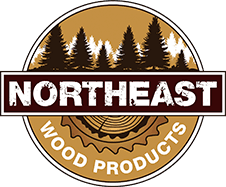Introduction to Hardwood Flooring
Hardwood flooring is a common option that is customizable, durable, and beautiful for any home style. Use of wood for flooring dates back to the 1600s, making it a timeless classic for any property.
In this article, we will discuss the ideal locations, common styles, production processes, and benefits of hardwood flooring.
Ideal Locations for Hardwood Flooring
One of the unique characteristics of hardwood flooring is its versatility used in numerous rooms in a home. Whether you want to improve the appearance of your master bedroom or living room, installing hardwood flooring makes an excellent option. Some of the best locations for hardwood flooring are:
- Living Room
- Kitchen
- Dining Room
- Bedroom
- Home Office
Hardwood flooring excels in these areas due to its durability, stain resistance, and style. Unlike softwood flooring, a hardwood floor has the durability to withstand heavy foot traffic without breaking down. Having hardwood flooring is also ideal for areas like the kitchen due to its stain resistance.
Unfortunately, hardwood flooring isn't the best choice for every room. Constant exposure to water can warp the wood, so it's typically not used in a bathroom, laundry room, or outdoor area. These areas are better suited for flooring styles like tile or engineered wood flooring that holds up better against moisture.
Common Hardwood Flooring Styles
Hardwood flooring comes in different species, colors, and finishing types. Picking a type of flooring will come down to your preferences and the home's interior design. Among hardwood flooring species, the most common type is oak flooring. Oak hardwood flooring offers a sophisticated appearance that gets better with age.
If you want hardwood flooring that blends seamlessly with a home, the color or finish of the wood should be an area of focus. Common color options for hardwood flooring are natural,weathered grey, or reddish-brown. The finish of the floor will also affect the overall appearance of the hardwood.
A common hardwood flooring finish is an oil-based polyurethane that provides a glossy look to the floor. Along with a glossy finish, you can find hardwood flooring finishes that are semi-gloss satin or even flat finishes today. Whatever your choice, a premium finish will elevate the look of your hardwood flooring.
The Hardwood Flooring Production Process
A lot goes into the production of hardwood flooring, starting from the raw materials to the final product. When working with a trusted manufacturer, such as Northeast Wood Products, the wood flooring follows strict production guidelines to achieve a high-quality appearance. This process starts at material sourcing - finding the best trees for the floor boards.
When trees are cut down, typically the highest quality ones are marked and set aside for flooring applications. These trees meet strict quality standards due to their natural beauty and minimal blemishes. When a tree has a lot of knots, it can impact the appearance and integrity of the wood flooring. Because of this, flooring is typically sold in different grades such as Select or Number 1 Common or Rustic.
These logs are cut into rough wood boards through a variety of saw milling methods. From there, the rough lumber is sorted by widths and grades before heading to be milled into flooring.
The milling process typically involves a moulder with a number of cutter heads - each with its own job to do. Since wood flooring has a tongue and groove assembly pattern, the moulder cuts a tongue and groove into the wood board simultaneously while planing the top and milling a backout on the bottom of the flooring.
Fun Fact: The purpose of the cut-outs in flooring is for stress relief, to keep the pieces from warping when they are machined. Old dry kilns did not have adequate stress relief capabilities, so by removing material, top and bottom, the stresses were balanced.
The finishing process is generally done on site. By following the production steps correctly, the hardwood flooring will be durable and add warmth to the space. A premium hardwood flooring will have a longevity that far exceeds softwood flooring options (though some softwood installations can stand the test of time).
Benefits of Hardwood Flooring for Homeowners
Now that you know where you should install the flooring, its color options, and how it's made–you should know its benefits. There are many benefits to installing hardwood flooring, but there are a few that are most important to homeowners. One of the biggest selling points of hardwood flooring is its low-maintenance design.
You can sweep, steam-clean, mop, or vacuum a hardwood floor with minimal preparation. When sealed, a hardwood floor will not stain, which is common in flooring types like carpet. If you spill something on your wood floor, you can easily wipe it up for a hassle-free floor option.
If you want to increase the value of a property, installing hardwood flooring can be an excellent long-term investment. Many homebuyers love the look of hardwood flooring and will be happy to see it in the home. In most cases, you can recoup 75% of the installation investment when selling a property with hardwood flooring.
When it comes to versatility and durability, few options compare to hardwood flooring. If you are looking for the perfect flooring style for your home, find a reliable supplier like Northeast Wood Products that will work with you to achieve the results you desire.

